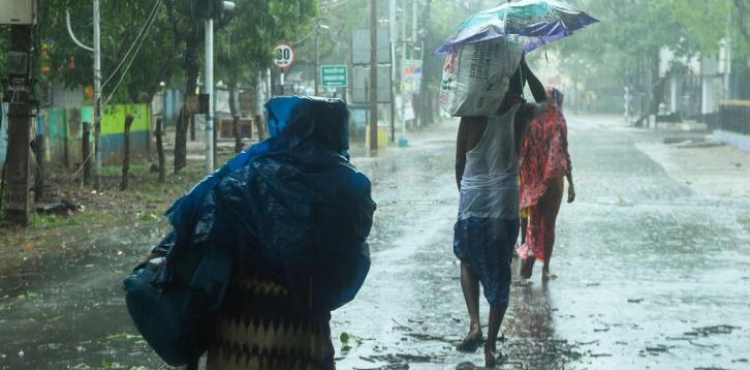“Amban” hit the strongest typhoon that was forming in the Bay of Bengal, on Wednesday afternoon, land east of India, and caused heavy rains and winds of 190 km per hour in Tamm Three million people evacuated.
The cyclone struck at about 18:00 local time (1230 GMT), one hundred kilometers south of the Indian city of Calcutta, and later headed to Bangladesh. "The hurricane is set over Sagar Island" at the mouth of the Hogley River, Sanjib Banerjee, director of the regional meteorological center, told AFP.
Meteorologists fear that a tsunami may reach up to five meters high. So far, three people have been killed, one of them in Bangladesh.
"The people in Calcutta are screaming when strong winds hit the city and shake the doors and windows," Srebarna Poozi, 60, is a university professor. "I have never seen such a situation in my life," she added.
Large parts of the capital of West Bengal state were sunk in the dark after power cuts as a preventive measure to avoid accidents. Strong winds uproot trees and electric poles.
Bangladesh has accommodated 2.4 million people residing in low coastal areas. In eastern India, more than 650,000 people were evacuated in West Bengal (East) and the neighboring Odisha region.
Although the hurricane waned as it approached the coast, the Indian and Bangladeshi authorities expected heavy material losses.
In the coastal towns of India, there are scenes of devastation witnessing cyclone violence. Babul Mondal, a resident of Jarakhali in an area south of Calcutta, said hundreds of mud houses were completely destroyed as if a bulldozer had passed over them. Everything is destroyed. "
A local hotel owner stated that the hurricane had pushed boats to the coast near the Indian resort of Dega.
Residents left all their possessions and hid hundreds in shelters worried about the hurricane and corona infection in these enclosed places.
"The hall is overcrowded and it is impossible to respect the principle of social separation here. We now rely on God alone who can save us," Romaki Khatun, a 25-year-old Bengali who took her five-month-old baby, to a school in Dakop, told AFP.
Despite official recommendations to put up masks in the shelters, many did not respect this measure, as noted by the France Press team on the ground.
The strength of the hurricane that formed at sea at the end of the week, Monday, was four degrees on the five-step Sapphire-Simpson ladder, accompanied by winds ranging between 200 and 240 km per hour.
It is the most powerful cyclone to hit the Bay of Bengal since 1999.
That year, the hurricane killed ten thousand people in Odisha.
This region has learned from the lessons of the devastating hurricanes in the region in previous decades. It has built thousands of shelters for residents and developed rapid evacuation policies.
But its mission this time is complicated by the spread of the emerging coronavirus, as population movements can help spread the epidemic.
Bangladesh has opened about 15,000 anti-cyclone centers, three times more than usual, to avoid overcrowding.
But fearing Corona´s infection, many residents of vulnerable areas chose to stay in their homes despite the hurricane.
"We heard that the cyclone shelter near the police commission is overcrowded and there are no longer any places in it," said Solata Munda, who lives in the Chennai district of Bangladesh. "We think we will be okay and if needed, we will come out later," said the mother, who has four children.
And if hurricanes have strengthened in recent years in the Bay of Bengal and are partly attributable to global warming, their human losses are generally lower than before thanks to a more sophisticated monitoring system and effective preventive measures.












